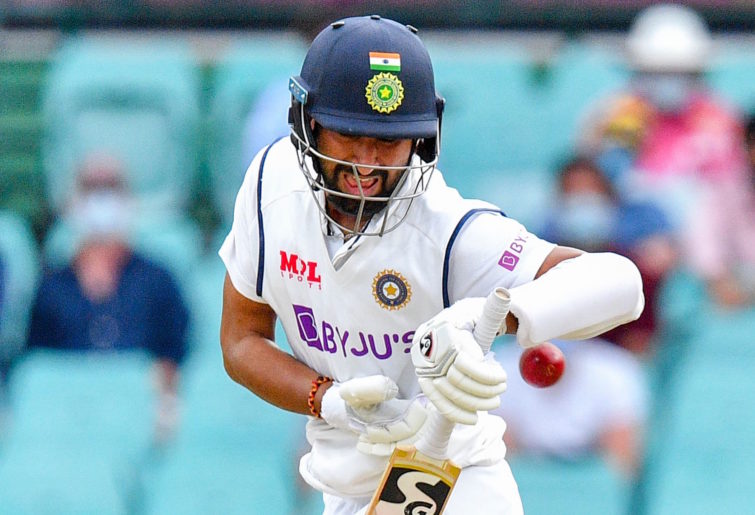The possibiliy of Jofra Archer's career coming to an early end will rob cricket of a bowler with so much talent
While a premature retirement isn’t the solution, he or England want, he may be forced into it if he can’t maintain a long run of matches.
Opinion
The first Test of the much awaited India versus England series saw a comprehensive victory for the tourists by a margin of 227 runs.
The tourists were given the initiative by their batsmen on the opening day and they never relinquished the pressure.
It was especially a personal triumph for Joe Root, both as a player and as a captain. He produced a five-star performance in his 100th Test match for his country.
Firstly, he won the toss and batted. With the pitch expected to offer plenty of help for the spinners, both teams packed their squad with slow bowlers. India had three specialist spinners while England went for left armer Jack Leach and the offie Dom Bess.
Also, Root was available with his gentle off spinners if necessary. In this scenario, winning the toss and batting first was extremely vital. And Joe Root did just that and it gave his side a massive advantage.
Secondly, he scored a century on the opening day. Although batting first gave the Poms the advantage, I wasn’t sure that they would be able to make full use of it. Their batting line-up is full of players averaging in the 30s in Test matches. Root is the only proper run machine with an average of 50.

(Julian Finney/Getty Images)
And when Rory Burns was dismissed for 33 after looking well set it came as a no surprise to me. The Surrey left hander has a reputation of failing to convert starts into scores. A duck for Dan Lawrence and England was 2-63, and the home side was very much in the game.
Enter Joe Root, the in-form England captain, and England regained the ascendancy. The 200-run partnership with Dominic Sibley ended in the final over of the day, but by that that time England had taken command of the match.
Sibley had played pretty much in the Geoffrey Boycott mold and his 87 had come from 286 deliveries (strike rate 30.42). But he provided great support to his skipper who looked to be in supreme control. Root finished the day on 128 not out. He had carried his batting form across the Gulf of Mannar.
Root scored a double century on the second day. Ben Stokes joined Root on the second morning and they consolidated the England dominance with a 124-run stand for the fourth wicket. Stokes was given the instructions to play his normal game, and as he went after the bowling, Root took the supporting role.
Watching Root on the second morning, it seemed clear to everyone that he was eyeing another double hundred, and no one was going to stop him. And when he eventually fell to the left-arm spin of Shahbaz Nadeem his individual score was 218. England finished the innings early on the third morning with a score of 578.
Little came on the fourth day. The home side was bowled out for 337 early on the fourth day. England had a lead of 241, but ever since the Eden Gardens Test of 2001 between India and Australia, it has become pretty common in South Asian Tests for teams not to enforce the follow on.
So England batted again. The idea was to give the bowlers some rest and also let the pitch deteriorate further. The Chennai wicket on the fourth day was already in a pretty bad shape. India opened the bowling with their spinners, Ravichandran Ashwin and Nadeem. Ashwin, in particular, was getting great purchase from the wicket.

(Photo by Peter Mundy/Speed Media/Icon Sportswire via Getty Images)
England, of course, was looking for some quick runs, and their 46.3-over innings ended with a score of 178, setting a target of 420 for the home side.
The highlight of the fourth day was a little cameo from the England skipper. His 40 came from just 32 balls and included seven hits to the fence. It was a remarkable effort, because the England skipper doesn’t have a great reputation for free scoring.
He is normally the solid middle-order bat who plays the long innings to provide the solidity to the score. In fact, in this situation, I had expected Ben Stokes and Josh Buttler to come ahead of him.
Root’s innings would look even more impressive if we consider the condition of the pitch at the time. There was consistent low bounce with odd deliveries not bouncing at all. But Root looked a class above any of his teammates, and played fluent drives, defying the conditions.
Root’s 70-minute knock showed his ability to adjust his batting technique to suit any condition or situation. I found it highly entertaining and amusing. To me, it was like watching Al Pacino playing a John Wayne-like role in a western movie.
His captaincy on the final day was also impressive. India finished the fourth day at 1-39 still 381 runs shy of their target. The pitch was behaving poorly, and in normal situations I would have considered an England victory on the final day a mere formality.
But a couple of events had taken place over the last few weeks that deserve a mention here. First, at the Gabba, India created history on the final day against Australia. And on February 7, the West Indies successfully chased down 395 against Bangladesh with the debutant Kyle Mayers dominating the show.
Even if they were unable to reach their target, at least the home side could rely on Cheteshwar Pujara or Ajinkya Rahane to play dogged innings to force a draw.

(Photo by Saeed KHAN / AFP via Getty Images)
So I decided to follow the final day’s proceedings with keen interest. England got an early boost with left armer Leach dismissing Pujara. But it was Root’s introduction of James Anderson that had the biggest impact on the outcome of the Test.
The Lancashire pacer wasn’t given the new ball here. Leach had shared it with Jofra Archer. Anderson, best known for his out-swingers, didn’t get much movement with the semi-new ball. Odd deliveries did come back a fraction, but he was just focusing on bowling straight as the ball was keeping lower and lower.
And Anderson got excellent rewards in no time. He bowled opener Shubman Gill for 50. Rahane survived a huge appeal for LBW before being bowled by a shooter for a duck. With scores of one and zero, it was a poor Test for the Bombay batsman.
In a bid to force the batsmen to play, Anderson went around the wicket for the left handers, and was rewarded with the wicket of Rishabh Pant. Joe Root took the catch. It was impossible for him to stay away from the action.
As a captain he was fully sure about his planned strategy. Unlike Tim Paine at the Gabba, Root was in total control of the situation here. Many people like me expected the two spinners, Leach and Bess, to bowl in tandem for the most part of the day.
But Root used seamers from one end. While Archer bowled a bit too short for this wicket, Stokes applied Anderson-like strategy and got the big scalp of Virat Kohli, bowled for a fine 72.
After that there was no resistance, and Archer dismissed Jasprit Bumrah to complete a memorable victory for his side.
Joe Root will certainly remember his 100th Test match for all the good reasons. Everything clicked for him here. As a batsman he looked to be at the top of his game, and as a captain he was always in total control.